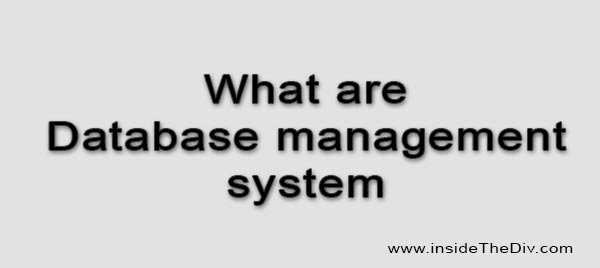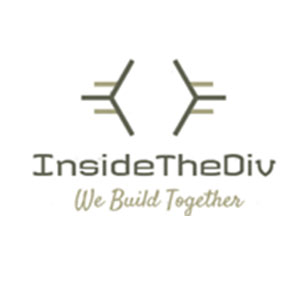What are Database Management System
Last Updated: 2022-12-22 04:43:09
A database management system (DBMS) is a software application that is used to store, organize, and manage data. It provides tools and facilities to create, manipulate, and query a database, as well as to enforce rules to ensure the data is accurate, consistent, and secure.
There are several types of DBMSs, including relational database management systems (RDBMS), object-oriented database management systems (OODBMS), NoSQL database management systems, cloud database management systems, and distributed database management systems. Each type of DBMS has its own unique features and capabilities and is suited to different types of applications and needs.
Some common functions of a DBMS include:
- Data definition: A DBMS allows you to define the structure of the data (e.g., the data types, relationships, and constraints) in the database. Learn how to create a table in the Database
- Data manipulation: A DBMS provides tools to insert, update, delete, and retrieve data from the database.
- Data query: A DBMS supports the use of a query language (such as SQL) to retrieve specific data from the database.
- Data security: A DBMS provides security controls to prevent unauthorized access to the data and to ensure the data is accurate and consistent.
- Data backup and recovery: A DBMS can create backups of the data and provide tools for recovering data in case of an emergency.
Overall, a DBMS is an essential tool for storing and managing large amounts of data and is used in a wide variety of applications, including finance, healthcare, retail, and more.
Types of database management systems with example
There are several types of database management systems, including:
- Relational database management systems (RDBMS): These store data in a structured format, using tables with rows and columns. RDBMSs use SQL (Structured Query Language) to manipulate and query the data. Examples of RDBMSs include MySQL, Oracle, and Microsoft SQL Server. here is an example of how you can create relations in the relational database management system.
- Object-oriented database management systems (OODBMS): These store data as objects, which can have attributes (data) and behaviors (methods). OODBMSs are often used in programming languages that support object-oriented programming. Examples include MongoDB and Apache Cassandra.
- NoSQL database management systems: These are non-relational database management systems that do not use SQL to query the data. NoSQL databases are often used for large-scale, distributed systems where data is stored in a flexible, unstructured format. Examples include Cassandra, MongoDB, and Apache HBase.
- Cloud database management systems: These are database management systems that are hosted on a cloud computing platform, such as Amazon Web Services or Microsoft Azure. Cloud database management systems can be either relational or non-relational.
- Distributed database management systems: These are database management systems that store data across multiple computers, allowing for faster data access and more scalability. Examples include Cassandra and MongoDB.
- In-memory database management systems: These are database management systems that store data in memory, rather than on disk. This can make them faster than traditional disk-based database management systems, but they can be more expensive and have limited scalability. Examples include SAP HANA and MemSQL.
Why do we need a database management system with an example
Database management systems (DBMS) are used to store, organize, and manage large amounts of data. Without a DBMS, it would be difficult to store and retrieve data efficiently, especially for organizations with large amounts of data.
Here is an example of why a database management system might be useful:
Imagine you are in charge of keeping track of all the customer orders for a large e-commerce website. You might start by creating a spreadsheet with columns for the customer name, order number, product purchased, and date of purchase. This works fine for a small number of orders, but as the number of orders grows, it becomes increasingly difficult to manage the data.
A database management system can help solve this problem by providing tools to organize and manage the data more efficiently.
For example, the DBMS could allow you to:
- Create a database to store customer orders.
- Define tables to hold the data, with columns for each piece of information (e.g., customer name, order number, product, date).
- Use SQL to query the data and retrieve specific orders or customers.
- Set up rules to ensure the data is entered correctly and consistently (e.g., customer names must be entered in all capital letters).
- Provide security controls to prevent unauthorized access to the data.
Overall, a DBMS makes it easier to store, retrieve, and manage large amounts of data, allowing organizations to make more informed decisions and operate more efficiently. Here is some important short notes PDF about MySQL for beginners
Advantages of a database Management system
There are several advantages to using a database management system (DBMS) to store and manage data:
- Data organization: A DBMS allows you to organize data in a structured format, making it easier to retrieve and analyze.
- Data integrity: A DBMS can enforce rules to ensure that data is entered consistently and accurately, improving the quality and reliability of the data.
- Data security: A DBMS can provide security controls to prevent unauthorized access to the data, protecting it from tampering or breaches.
- Data independence: A DBMS can decouple the data from the application, allowing the data to be accessed and modified by multiple applications without affecting each other.
- Data scalability: A DBMS can handle large amounts of data and support many users, making it easy to scale up as the organization grows.
- Data backup and recovery: A DBMS can automatically create backups of the data and provide tools for recovering data in case of an emergency.
- Data sharing: A DBMS can allow multiple users to access and modify the data concurrently, improving collaboration and decision-making.
In conclusion, a database management system (DBMS) is a software application that is used to store, organize, and manage data. There are several types of DBMSs. Each type of DBMS has its own unique features and capabilities and is suited to different types of applications and needs. You need to choose DBMS based on your project requirements.
Still you face problems, feel free to contact with me, I will try my best to help you.

